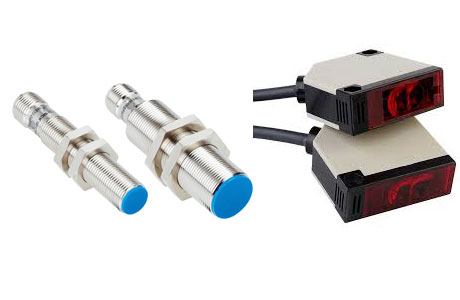Key Takeaway
A proximity sensor detects the presence or absence of an object without physical contact, typically using electromagnetic fields or capacitive sensing. These sensors are commonly used for detecting metal objects and work well in short-range applications.
A photoelectric sensor, however, uses light to detect objects. It emits a beam of light, often infrared, and measures its reflection. Changes in the reflected light indicate the presence of an object. Photoelectric sensors are more versatile, capable of detecting various materials and used in industrial applications.
Overview of Proximity Sensors: Types and Functionality
Proximity sensors are designed to detect objects without any physical contact. They work based on electromagnetic fields or changes in the environment. There are different types of proximity sensors: inductive, capacitive, magnetic, and ultrasonic. Inductive sensors, for instance, detect metal objects, making them a go-to for manufacturing setups involving machinery. Capacitive sensors, on the other hand, can detect both metallic and non-metallic objects, making them highly versatile.
The core function of a proximity sensor is reliability and precision. Their no-contact detection ensures longer equipment life and reduced wear and tear, a vital feature for industries running continuous operations. Whether it’s in conveyor systems or robotics, proximity sensors are the silent force keeping things running smoothly.

How Photoelectric Sensors Differ in Design and Application
Photoelectric sensors work by emitting a beam of light, typically infrared or visible light, to detect objects. When this light beam is interrupted, the sensor triggers a response, making them incredibly versatile in various industrial environments. They come in three main types: through-beam, retroreflective, and diffuse reflective sensors. Each type has specific applications depending on the nature of the detection required.
What makes these sensors stand out is their exceptional detection range, which can be much longer than proximity sensors. For example, in automated warehouses, photoelectric sensors detect large boxes or pallets from a distance, improving the efficiency of material handling. Additionally, they can detect transparent objects, such as glass bottles, something that other sensors may struggle with. This capability makes them indispensable in industries like packaging and food processing.
Key Strengths of Proximity Sensors vs. Photoelectric Sensors
Proximity and photoelectric sensors have distinct strengths that make them suited for different environments. Proximity sensors are designed for durability and toughness. They excel in harsh conditions, such as those found in heavy industries, where dust, moisture, and debris are common. These sensors are durable, with no moving parts, making them resistant to physical wear, which is crucial in long-term industrial applications.
On the other hand, photoelectric sensors excel when accuracy and range are necessary. Their ability to detect non-metallic objects, including small or transparent items, sets them apart. In industries like logistics and food processing, where precision and long-range detection are critical, these sensors play a key role in ensuring operational efficiency. The real takeaway is that proximity sensors are best for rugged environments, while photoelectric sensors provide flexibility and precision.
Application Scenarios for Each Sensor Type
Consider a fast-paced production line in an automotive factory. Proximity sensors are frequently used to detect the position of metal parts, ensuring machinery operates safely. For instance, they might monitor when a car body moves into the correct position for welding. Their robust nature makes them perfect for environments with heavy machinery and rough conditions, providing consistent, reliable detection.
In contrast, photoelectric sensors shine in open environments like warehouses, where they detect boxes or pallets over long distances. Their ability to sense transparent objects is another critical advantage, particularly in industries like food and beverage processing. For high-speed production lines, where quick, accurate detection is needed, these sensors provide a solution that ensures efficiency and reduces errors. If material type or detection distance is a concern, photoelectric sensors are the clear choice.
Which Sensor is Best Suited for Your Industrial Setup?
Selecting the right sensor depends entirely on the specific requirements of your industrial environment. Proximity sensors are best suited for tough, rugged conditions where factors like heat, dust, and metal debris are common. Their ability to endure such harsh environments makes them reliable and low-maintenance, ideal for heavy-duty industrial applications.
On the flip side, if your setup demands precision over a long distance or involves non-metallic or transparent materials, photoelectric sensors are the way to go. In high-speed automated systems, these sensors ensure accuracy and efficiency, particularly when detecting small or transparent objects. For industries like packaging and logistics, where precise detection of every item is crucial, photoelectric sensors offer a tailored solution that minimizes errors and boosts productivity.
Conclusion
Proximity sensors and photoelectric sensors play distinct yet complementary roles in industrial automation, offering unique benefits based on the application. Proximity sensors, known for their durability and contactless detection, are ideal for rugged environments, while photoelectric sensors excel in long-range, precise detection tasks. Understanding the specific strengths of each sensor type allows for more informed decisions that can enhance the efficiency and safety of industrial operations, ensuring smooth performance and optimal results in various setups. The right sensor choice can significantly impact the overall effectiveness of your automation system.
